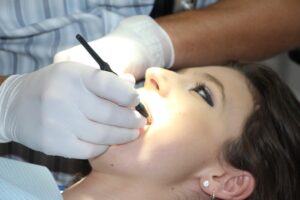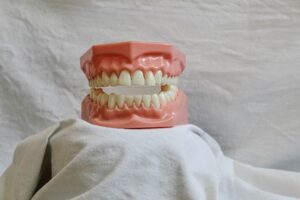- Open Rhinoplasty
- – Description: Involves an incision across the columella and lifting the skin to provide better visibility.
- – Pros:
– Superior visibility and access.
– Suitable for complex cases. - – Cons:
– Longer recovery time.
– Potential visible scarring.
– More postoperative swelling.
- – Pros:
- – Description: Involves an incision across the columella and lifting the skin to provide better visibility.
- Closed Rhinoplasty
- – Description: All incisions are inside the nostrils, avoiding external scars.
- -Pros:
- – No visible scarring.
- Shorter recovery time.
- – Less invasive.
- – Cons:
- – Limited visibility.
- – Not ideal for complex reshaping.
- -Pros:
- – Description: All incisions are inside the nostrils, avoiding external scars.
- Preservation Rhinoplasty
- – Description: Focuses on maintaining the natural nasal dorsum while correcting deformities.
- – Types:
- – High Strip Technique:
- -Description: Preserves a high dorsal strip while reshaping the sides.
- – Pros: Strong dorsal support, maintains natural lines.
- – Cons: Limited to moderate dorsal height reduction.
- -Description: Preserves a high dorsal strip while reshaping the sides.
- -Low Strip Technique:
- -Description: Preserves a lower strip for more significant height reduction.
- – Pros: Allows significant height reduction, maintains support.
- – Cons: More challenging to execute.
- -Description: Preserves a lower strip for more significant height reduction.
- – Ishida Technique:
- – Description: Preserves keystone area with minimal resection.
- – Pros: Balanced approach, maintains natural aesthetics.
- – Cons: Technical complexity.
- – Description: Preserves keystone area with minimal resection.
- – Tetris Technique:
- – Description: Uses cartilage segments like Tetris blocks.
- – Pros: Highly customizable.
- – Cons: Requires high skill level.
- – Pros: Natural appearance, reduces irregularities, maintains structure.
- – Cons: Technically demanding, not suitable for all deformities.
- – Description: Uses cartilage segments like Tetris blocks.
- – High Strip Technique:
- – Types:
- – Description: Focuses on maintaining the natural nasal dorsum while correcting deformities.
- Ultrasound/Piezosurgery Rhinoplasty
- – Description: Uses ultrasonic energy (piezosurgery) to reshape nasal bones with precision.
- – Pros:
- – Minimal trauma to surrounding tissues.
- – Reduced bruising and swelling.
- – Enhanced precision.
- – Cons:
- – Requires specialized equipment and training.
- – May have a learning curve for surgeons.
- – Pros:
- – Description: Uses ultrasonic energy (piezosurgery) to reshape nasal bones with precision.
- Structural Rhinoplasty
- – Description: Focuses on reinforcing and rebuilding the nasal framework for long-term stability and aesthetics.
- – Pros:
- – Provides strong and stable results.
- – Can address both cosmetic and functional issues.
- – Suitable for major reconstructions.
- – Cons:
- – Often more invasive.
- – Longer recovery time.
- – Potentially more complex surgery.
- – Pros:
- – Description: Focuses on reinforcing and rebuilding the nasal framework for long-term stability and aesthetics.
- Tip Rhinoplasty
- – Description: Alters only the nasal tip.
- – Pros:
- – Precise targeting of nasal tip.
- – Less invasive.
- – Shorter recovery.
- – Cons:
- – Limited to tip modifications.
- – May not address other nasal issues.
- – Pros:
- – Description: Alters only the nasal tip.
- Revision Rhinoplasty
- – Description: Corrects or improves previous rhinoplasty results.
- – Pros:
- – Addresses dissatisfaction or complications from previous surgery.
- – Provides opportunity for desired outcomes.
- – Cons:
- – More complex due to scar tissue and altered anatomy.
- – Longer recovery.
- – Higher risk of complications.
- – Pros:
- – Description: Corrects or improves previous rhinoplasty results.
- Ethnic Rhinoplasty
- – Description: Tailored to unique nasal structures and aesthetic goals of different ethnicities.
- – Pros:
- – Maintains ethnic identity.
- – Enhances natural features.
- – Cons:
- – Requires experience.
- – Balancing aesthetics and structure can be challenging.
- – Pros:
- – Description: Tailored to unique nasal structures and aesthetic goals of different ethnicities.
- Nonsurgical Rhinoplasty (Liquid Rhinoplasty)
- – Description: Uses fillers to temporarily alter nose shape.
- – Pros:
- – Non-invasive.
- – Immediate results.
- – No downtime.
- – Cons:
- – Temporary (6-12 months).
- – Limited corrections.
- – Risk of filler complications.
- – Pros:
- – Description: Uses fillers to temporarily alter nose shape.
- Functional Rhinoplasty
- – Description: Improves nasal function (e.g., breathing) and aesthetics.
- – Pros:
- – Enhances breathing and aesthetics.
- – Improves quality of life.
- – Cons:
- – Complex if combined with cosmetic goals.
- – Recovery involves both functional and aesthetic aspects
- – Pros:
- – Description: Improves nasal function (e.g., breathing) and aesthetics.
Each type of rhinoplasty has its advantages and challenges. The choice of technique depends on the patient’s anatomy, goals, and the surgeon’s expertise.



